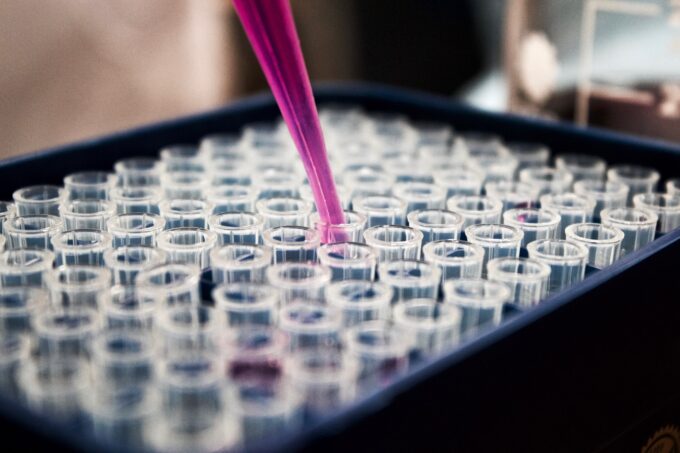Synthetic peptides are tiny polymers of amino acids that have been chemically produced. Synthetic peptides may be compared to oligos, which are a kind of DNA molecule. Peptide bonds between two amino acids have been recognized for more than a century, and the first tiny proteins were chemically produced in the 1950s and 60s.
An amino acid is synthesized by attaching its carboxyl group to that of the amino acid before it in a peptide chain. To avoid unwanted reactions, certain reactive groups on the side linkages and termini should be chemically shielded.
In the modern-day, peptides can be readily manufactured on a big scale and sent to you in a matter of days. Synthetic peptides may be purchased easily, so if you are a researcher, you can buy peptides online, but bear in mind that they should only be used for research reasons. In this post, we’ll discuss the benefits and downsides of synthetic peptides, such as biotechpeptides.
Recombinant Proteins vs. Synthetic Peptides:

Source: scitechdaily.com
Do you think it’s possible to synthesize a whole protein? Polypeptides like insulin A and B chains have a maximum length of roughly 20 to 50 amino acids, which is the same length as synthetic peptides.
To chemically manufacture bigger proteins, you may bind synthetic peptides together using ligation. The 238-residue precursor for green fluorescent protein (GFP) was synthesized by Nishiuchi et al. by assembling and connecting partly protected peptides, and the fluorescence profile in solution was shown to be equal to that of recombinant GFP. However, we’ll go into more depth about this in the second installment. It is conceivable to chemically manufacture a whole protein; however, it is not that simple, and it is not necessarily beneficial.
In vitro translation systems are worth highlighting (IVT). To make peptides in a test tube rather than living cells, you utilize wheat germ or rabbit reticulocyte extracts, mRNA, amino acids, and salts. It is possible to produce a polypeptide without having to worry about cultivating cells using IVT. When creating proteins that are potentially harmful to the host cell, this method is suitable. IVT may be a good option for small-scale applications if you need to produce a peptide with more than 100 amino acids in a short period of time.
This raises the question: why not just go with an IVT-produced protein instead of anything recombinant?
Synthetic Peptides: What’s the Point?
For starters, unlike recombinant proteins, you don’t have to bother about complex cell culture systems or subsequent purification steps. You can swiftly synthesize a large number of SH3 binding motifs if you have a specific need for them.
Secondly, you may isolate distinct parts of proteins, such as binding sites or substrates for kinases. The existence of extra components, domains, or motifs in full-length proteins might cause problems in this sort of experiment. Peptides, on the other hand, may fall short if the interaction is complicated.
It’s also possible to conduct high-throughput tests with synthetic peptides because of the simplicity with which they may be produced in big numbers. Purified proteins need a lot of work to obtain enough material for kinetic measurements, and you’re restricted to a small number of protein analytes at a time.
Synthetic Peptides: Advantages and Disadvantages

Source: unsplash.com
Synthetic peptides have both advantages and disadvantages.
Pros
- If you’re looking for a cost-effective solution: As long as you need a short peptide of between 20 and 50 amino acids, you should use chemical syntheses. Vendors are available to help you
- with this quickly. Compared to cloning and expressing the gene in a biological system, the time savings alone are worth it.
- Some post-translational changes, such as phosphorylation of Tyr or Ser, are possible.
- There is no need to be concerned about the complexity of the biological matrix while creating peptides with such high purity and accuracy.
- For purification, you don’t have to include an affinity tag, which might interfere with the peptide’s original function.
Cons
- You’re only able to make proteins of a certain size (20–50 amino acids).
- It can be troublesome for interactions requiring post-translational modifications, like glycosylation, that are difficult to integrate synthetically for biological activity.
- Hard to form disulfide bonds.
- It may not be suitable for applications requiring secondary or tertiary structure or for the production of large bioactive proteins. – proteins.
Synthetic peptides: Their Many Uses

Source: unsplash.com
Custom Antibody Production
Custom antibodies may be generated using synthetic peptides as antigens. The peptide may induce a host humoral immune response and create both monoclonal and polyclonal antibodies when it is attached to a carrier protein. This method makes it much easier to manipulate the epitope than if you were to use the whole original protein. [6] However, the antigen’s amino acid sequence is crucial. There are free online tools [7] that may assist you in picking the sequence that is most likely to induce an immunological response.
Antibodies that are based on peptides are appropriate for Western blot analysis. A peptide containing a phosphorylated amino acid might be used to produce an antibody that only recognizes phosphorylated proteins. A Western blot may be stained for phosphorylated and non-phosphorylated versions of the protein by using this antibody plus a peptide with the non-phosphorylated residues. In cell signaling research, this technique is often employed to investigate the connections between protein kinases and phosphatases. You won’t even have to deal with P-32 cleanup!
Interactions between proteins
Peptides are excellent for dissecting the fundamentals of protein-protein interactions. [8] Proteins that bind to the biotinylated peptide may be pulled down using streptavidin-coated beads. Using peptides corresponding to histone tails with and without post-translational modifications is employed in epigenetics study. SDS-PAGE may be used to examine any associated proteins.
NMR and fluorescence anisotropy may also benefit from synthetic peptides because of their short size. Peptides may also be used as substrates for enzyme processes, the last use for them. It was shown that peptide libraries and purified enzymes might be utilized to find direct substrates for the enzymes. Using biological systems and probing for interactions between native or recombinant proteins would have been very challenging, if not impossible.
Spectroscopy by mass
Mass spectrometry may benefit from the use of synthetic peptides as standards. There are many factors that influence how easy or difficult it is to accurately measure the peptides formed after digesting a protein using mass spectrometry.
As an example, if you’d want to know the concentration of an isotopically tagged peptide with a certain post-translational modification in your protein, you may do so. Native peptide levels may now be quantified using an internal standard.
If you’re looking for peaks in an MS/MS spectrum, synthetically labeled peptides may also assist because they create the same MS/MS spectrum patterns as native peptides but are offset by the variation in molecular weight.







